
Design Thinking in Hospitality: How Brightwild Builds Spaces That Inspire
In the world of short-term vacation rentals, a beautiful space is just the beginning. At Brightwild, we believe that truly exceptional hospitality happens when thoughtful design meets genuine understanding of how our guests want to live, work, and play during their stays.
Beyond Pretty Pictures: The Science of Space
While scrolling through vacation rental listings, it's easy to get caught up in stunning photography and Instagram-worthy interiors. But here's what we've learned after years in the hospitality industry: the most memorable stays aren't just about how a space looks—they're about how a space makes you feel.
This is where design thinking transforms ordinary accommodations into extraordinary experiences.
Form Follows Function: The Brightwild Philosophy
Our design philosophy is rooted in the principle that form follows function. Every design decision we make starts with a fundamental question: "How will our guests actually use this space?"
Take the simple example of a living room. A traditional approach might focus on creating a picture-perfect seating arrangement. Our design thinking approach asks deeper questions:
- Are our guests here for family reunions or romantic getaways?
- Do they need flexible spaces for work-from-anywhere setups?
- Will they be entertaining, or seeking quiet retreat?
- How does the local culture and environment influence their daily rhythms?
The answers to these questions shape everything from furniture placement to lighting choices to technology integration.
.jpg)
.jpg)
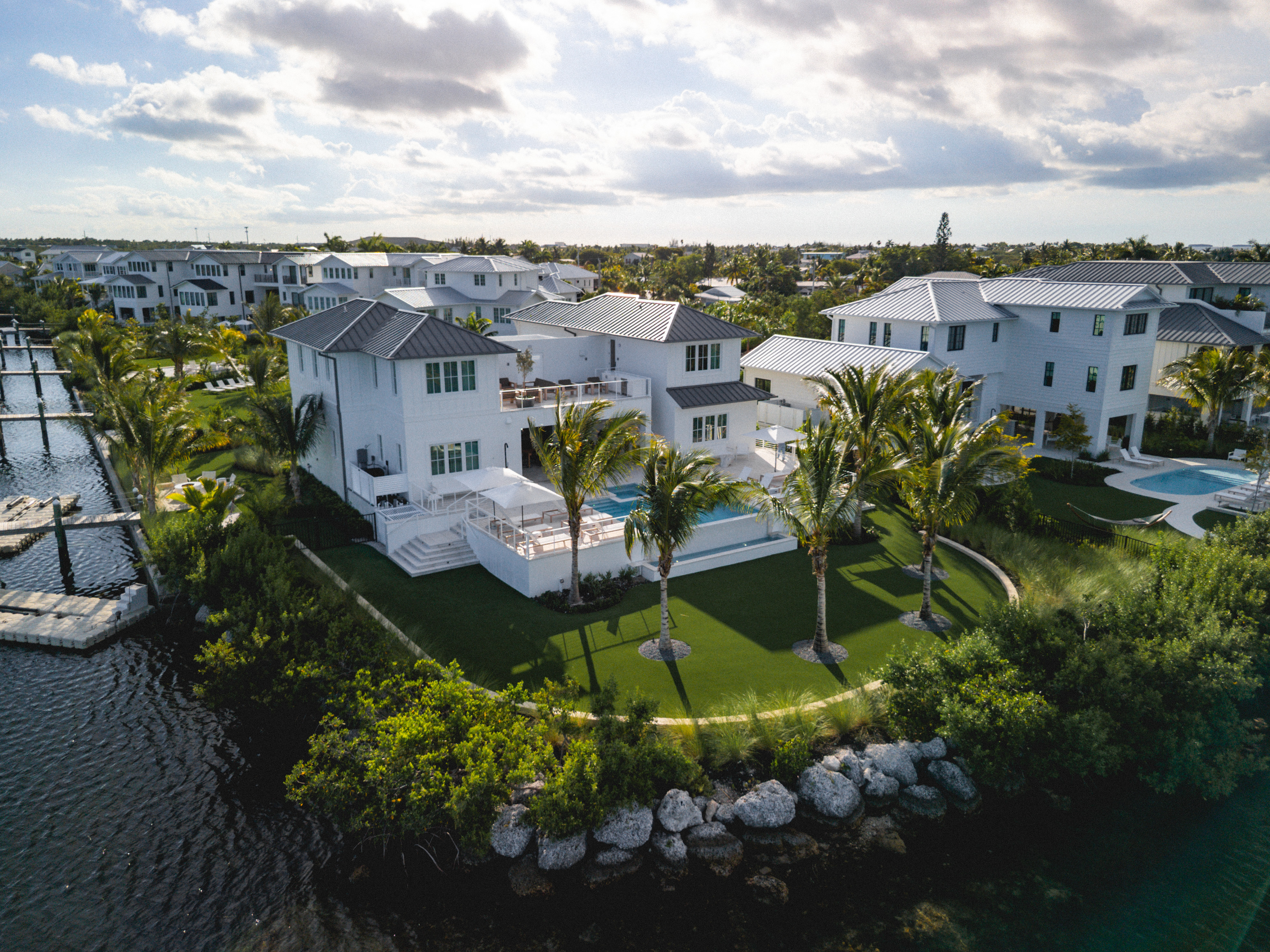

In the world of short-term vacation rentals, a beautiful space is just the beginning. At Brightwild, we believe that truly exceptional hospitality happens when thoughtful design meets genuine understanding of how our guests want to live, work, and play during their stays.
Beyond Pretty Pictures: The Science of Space
While scrolling through vacation rental listings, it's easy to get caught up in stunning photography and Instagram-worthy interiors. But here's what we've learned after years in the hospitality industry: the most memorable stays aren't just about how a space looks—they're about how a space makes you feel.
This is where design thinking transforms ordinary accommodations into extraordinary experiences.
Form Follows Function: The Brightwild Philosophy
Our design philosophy is rooted in the principle that form follows function. Every design decision we make starts with a fundamental question: "How will our guests actually use this space?"
Take the simple example of a living room. A traditional approach might focus on creating a picture-perfect seating arrangement. Our design thinking approach asks deeper questions:
- Are our guests here for family reunions or romantic getaways?
- Do they need flexible spaces for work-from-anywhere setups?
- Will they be entertaining, or seeking quiet retreat?
- How does the local culture and environment influence their daily rhythms?
The answers to these questions shape everything from furniture placement to lighting choices to technology integration.
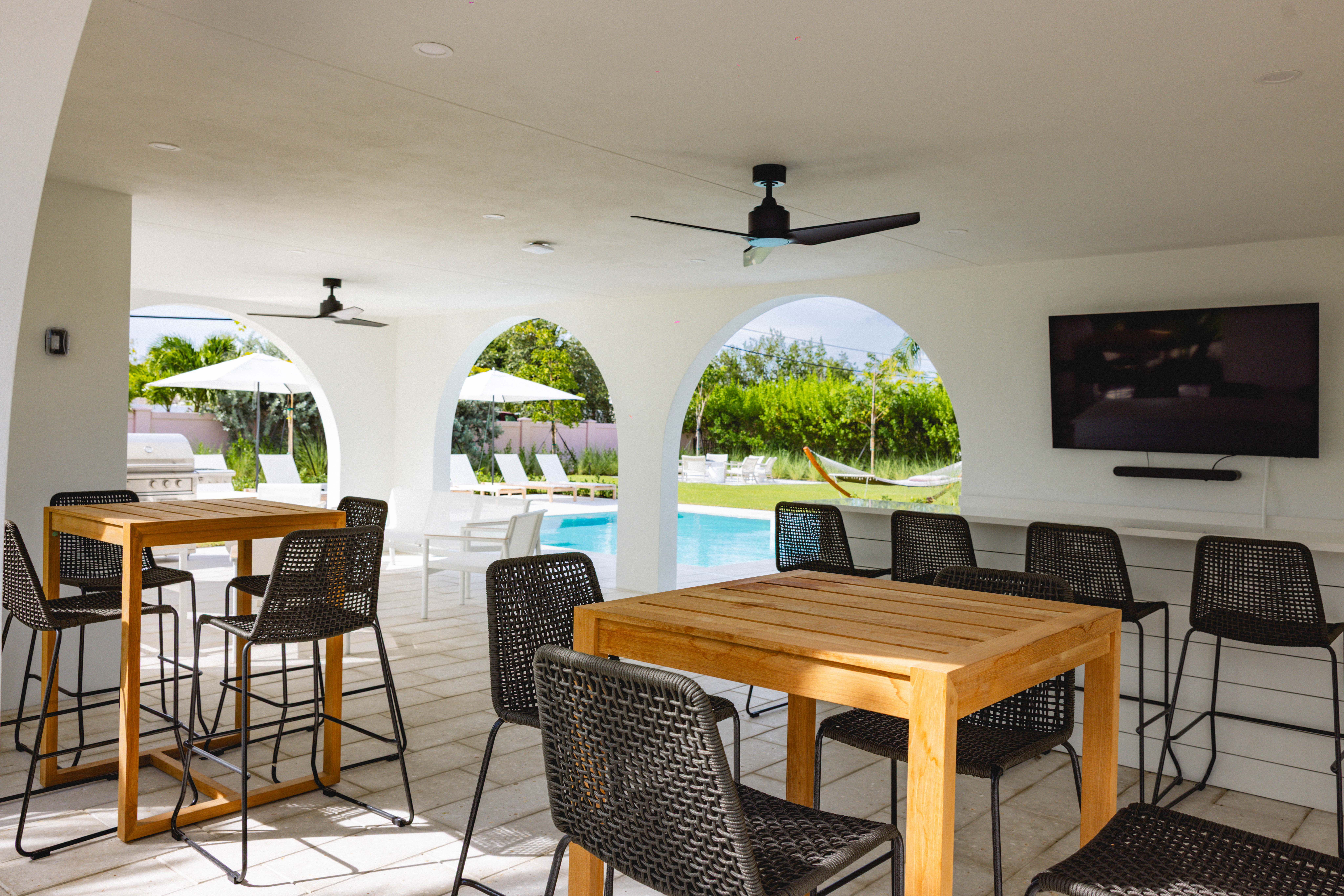
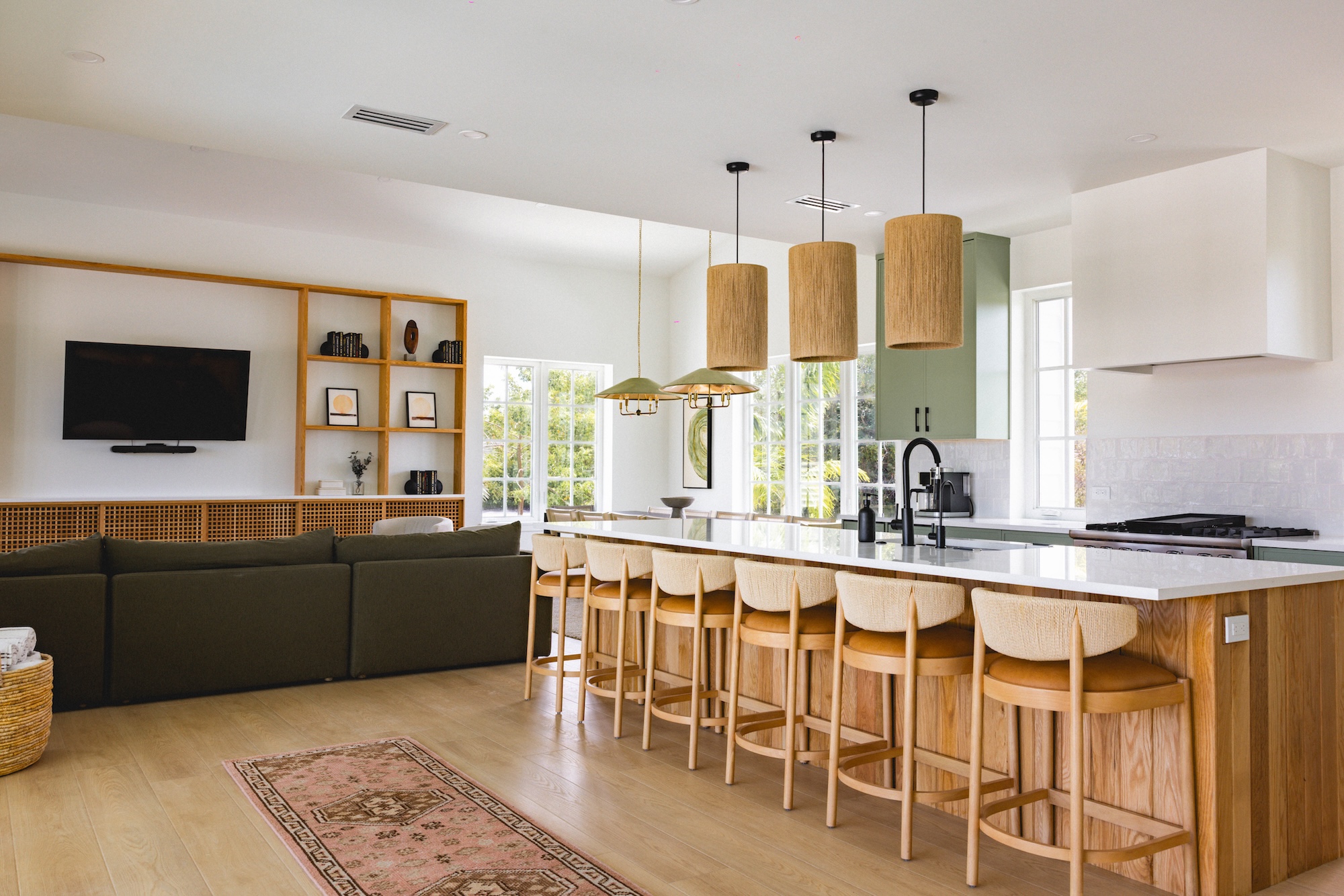
In the world of short-term vacation rentals, a beautiful space is just the beginning. At Brightwild, we believe that truly exceptional hospitality happens when thoughtful design meets genuine understanding of how our guests want to live, work, and play during their stays.
Beyond Pretty Pictures: The Science of Space
While scrolling through vacation rental listings, it's easy to get caught up in stunning photography and Instagram-worthy interiors. But here's what we've learned after years in the hospitality industry: the most memorable stays aren't just about how a space looks—they're about how a space makes you feel.
This is where design thinking transforms ordinary accommodations into extraordinary experiences.
Form Follows Function: The Brightwild Philosophy
Our design philosophy is rooted in the principle that form follows function. Every design decision we make starts with a fundamental question: "How will our guests actually use this space?"
Take the simple example of a living room. A traditional approach might focus on creating a picture-perfect seating arrangement. Our design thinking approach asks deeper questions:
- Are our guests here for family reunions or romantic getaways?
- Do they need flexible spaces for work-from-anywhere setups?
- Will they be entertaining, or seeking quiet retreat?
- How does the local culture and environment influence their daily rhythms?
The answers to these questions shape everything from furniture placement to lighting choices to technology integration.

User-Centric Design in Action
Understanding Guest Diversity
Every Brightwild property begins with understanding our guests—not just demographics, but the full spectrum of how people travel and what they seek from their experiences. We recognize that today's travelers represent an incredibly diverse range of motivations, work styles, family structures, and lifestyle preferences.
Some guests are seeking high-energy social experiences, while others crave quiet solitude. Some need seamless technology integration for remote work, while others want to completely disconnect. Some travel in large multigenerational groups, others as couples, and many as solo adventurers. Some find joy in bold, stimulating environments, while others are restored by calm, minimalist spaces.
Rather than designing for an "average" traveler who doesn't really exist, we embrace this beautiful complexity of human preferences and create spaces that authentically serve the full range of how people want to live during their travels.
Intentional Space Planning
Each guest type inspires different spatial solutions. Our design process involves mapping guest journeys through our spaces—from arrival to departure—identifying friction points and opportunities to delight.
We consider the practical: How do guests move through morning routines? Where do they naturally gather? What creates stress, and what brings joy?
But we also consider the emotional: How does the space welcome them home after a day of exploration? Where can they find solitude when they need it? How do transitions between spaces feel?
Design Thinking in Practice: Lunara Bay
Our commitment to diverse, user-centric design is perfectly exemplified in our most recent project: Lunara Bay. This stunning waterfront resort features 26 luxury homes, each with its own individual design approach within a cohesive resort setting.
Rather than creating cookie-cutter accommodations, we embraced the challenge of designing 26 distinct experiences. Each home reflects different aspects of our design philosophy:
Some homes feature minimalist coastal modern aesthetics with clean lines for guests who find peace in uncluttered environments and ocean views. Others embrace the same coastal modern foundation but with stronger, bolder colors and patterns that celebrate the vibrant local culture. All properties feature seamless indoor-outdoor living with private waterfront spaces, while individual homes are tailored as intimate cozy retreats for romantic getaways or open social spaces perfect for family gatherings, weddings, corporate retreats.
The magic of Lunara Bay lies not just in individual home designs, but in how they work together as a resort community. Guests can choose the specific aesthetic and atmosphere that resonates with them while still being part of a larger, thoughtfully planned destination. A family might book the vibrant, activity-focused home while grandparents stay in the serene, sophisticated retreat next door—different design styles serving different preferences within the same vacation experience.
This project represents everything we believe about hospitality design: intentional variety, user-centric thinking, and the understanding that great spaces should inspire different people in different ways.
Diversity by Design: Something for Everyone
One of our core beliefs is that there's no such thing as universal design preferences. What feels inspiring to one guest might feel overwhelming to another. What seems cozy to some might feel cramped to others.
This is why Brightwild's portfolio intentionally features diverse design approaches:
Minimalist Modern spaces for guests who find clarity in clean lines and uncluttered environments.
Warm Traditional environments for those who seek comfort in familiar, homey elements.
Bold Contemporary designs for guests who are energized by color, pattern, and artistic expression.
Natural Organic spaces that blur the lines between indoor and outdoor living.
Each approach serves different guest needs and preferences, ensuring that every traveler can find a Brightwild property that truly resonates with them.
The Ripple Effects of Thoughtful Design
When we get design thinking right, the benefits extend far beyond guest satisfaction:
For Guests: Spaces that intuitively support their needs, reducing friction and increasing enjoyment throughout their stay.
For Communities: Properties that respect and enhance local character while providing economic benefits to the area.
For Owners: Higher occupancy rates, better reviews, and properties that maintain their value through thoughtful, timeless design decisions.
For Our Team: The satisfaction of creating spaces that genuinely improve people's experiences and memories.
Looking Forward: The Future of Hospitality Design
As travel patterns evolve and guest expectations continue to rise, our commitment to design thinking becomes even more crucial. We're constantly learning, testing new approaches, and refining our understanding of what makes spaces truly inspiring.
The future of hospitality isn't just about providing a place to stay—it's about creating environments that enhance every aspect of the travel experience. At Brightwild, we're proud to lead that evolution, one thoughtfully designed space at a time.
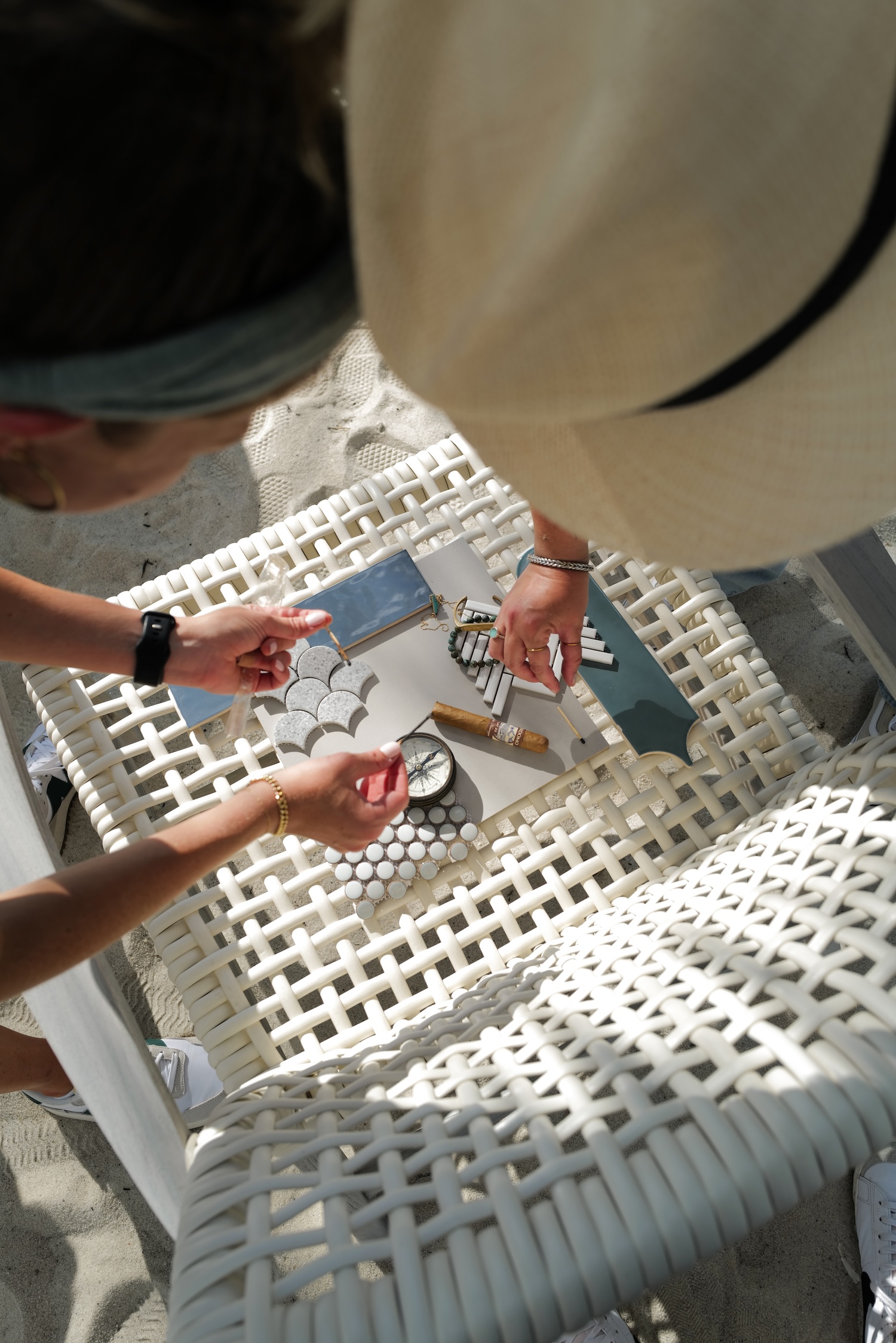
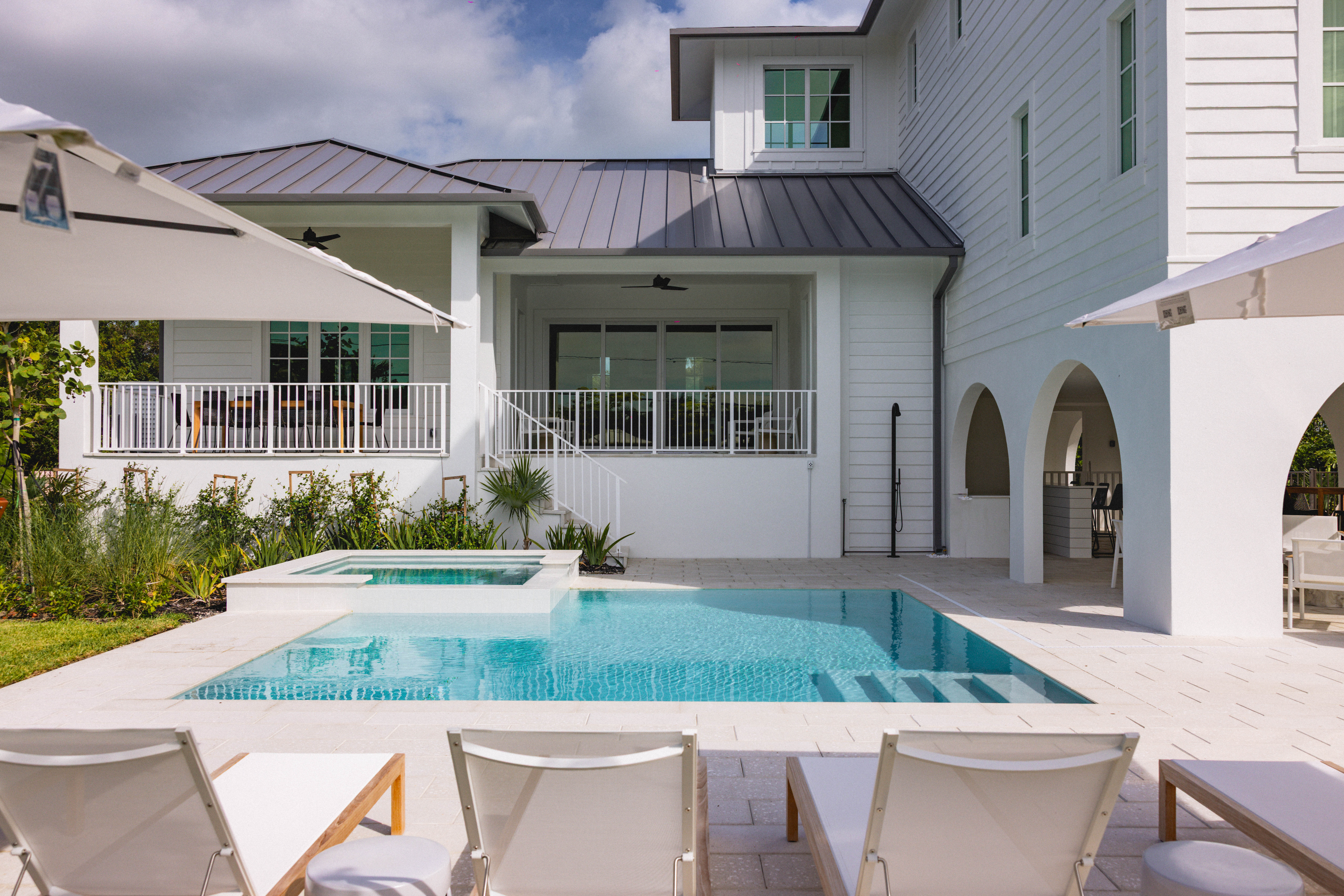
User-Centric Design in Action
Understanding Guest Diversity
Every Brightwild property begins with understanding our guests—not just demographics, but the full spectrum of how people travel and what they seek from their experiences. We recognize that today's travelers represent an incredibly diverse range of motivations, work styles, family structures, and lifestyle preferences.
Some guests are seeking high-energy social experiences, while others crave quiet solitude. Some need seamless technology integration for remote work, while others want to completely disconnect. Some travel in large multigenerational groups, others as couples, and many as solo adventurers. Some find joy in bold, stimulating environments, while others are restored by calm, minimalist spaces.
Rather than designing for an "average" traveler who doesn't really exist, we embrace this beautiful complexity of human preferences and create spaces that authentically serve the full range of how people want to live during their travels.
Intentional Space Planning
Each guest type inspires different spatial solutions. Our design process involves mapping guest journeys through our spaces—from arrival to departure—identifying friction points and opportunities to delight.
We consider the practical: How do guests move through morning routines? Where do they naturally gather? What creates stress, and what brings joy?
But we also consider the emotional: How does the space welcome them home after a day of exploration? Where can they find solitude when they need it? How do transitions between spaces feel?
Design Thinking in Practice: Lunara Bay
Our commitment to diverse, user-centric design is perfectly exemplified in our most recent project: Lunara Bay. This stunning waterfront resort features 26 luxury homes, each with its own individual design approach within a cohesive resort setting.
Rather than creating cookie-cutter accommodations, we embraced the challenge of designing 26 distinct experiences. Each home reflects different aspects of our design philosophy:
Some homes feature minimalist coastal modern aesthetics with clean lines for guests who find peace in uncluttered environments and ocean views. Others embrace the same coastal modern foundation but with stronger, bolder colors and patterns that celebrate the vibrant local culture. All properties feature seamless indoor-outdoor living with private waterfront spaces, while individual homes are tailored as intimate cozy retreats for romantic getaways or open social spaces perfect for family gatherings, weddings, corporate retreats.
The magic of Lunara Bay lies not just in individual home designs, but in how they work together as a resort community. Guests can choose the specific aesthetic and atmosphere that resonates with them while still being part of a larger, thoughtfully planned destination. A family might book the vibrant, activity-focused home while grandparents stay in the serene, sophisticated retreat next door—different design styles serving different preferences within the same vacation experience.
This project represents everything we believe about hospitality design: intentional variety, user-centric thinking, and the understanding that great spaces should inspire different people in different ways.
Diversity by Design: Something for Everyone
One of our core beliefs is that there's no such thing as universal design preferences. What feels inspiring to one guest might feel overwhelming to another. What seems cozy to some might feel cramped to others.
This is why Brightwild's portfolio intentionally features diverse design approaches:
Minimalist Modern spaces for guests who find clarity in clean lines and uncluttered environments.
Warm Traditional environments for those who seek comfort in familiar, homey elements.
Bold Contemporary designs for guests who are energized by color, pattern, and artistic expression.
Natural Organic spaces that blur the lines between indoor and outdoor living.
Each approach serves different guest needs and preferences, ensuring that every traveler can find a Brightwild property that truly resonates with them.
The Ripple Effects of Thoughtful Design
When we get design thinking right, the benefits extend far beyond guest satisfaction:
For Guests: Spaces that intuitively support their needs, reducing friction and increasing enjoyment throughout their stay.
For Communities: Properties that respect and enhance local character while providing economic benefits to the area.
For Owners: Higher occupancy rates, better reviews, and properties that maintain their value through thoughtful, timeless design decisions.
For Our Team: The satisfaction of creating spaces that genuinely improve people's experiences and memories.
Looking Forward: The Future of Hospitality Design
As travel patterns evolve and guest expectations continue to rise, our commitment to design thinking becomes even more crucial. We're constantly learning, testing new approaches, and refining our understanding of what makes spaces truly inspiring.
The future of hospitality isn't just about providing a place to stay—it's about creating environments that enhance every aspect of the travel experience. At Brightwild, we're proud to lead that evolution, one thoughtfully designed space at a time.
.jpg)
.jpg)

In the world of short-term vacation rentals, a beautiful space is just the beginning. At Brightwild, we believe that truly exceptional hospitality happens when thoughtful design meets genuine understanding of how our guests want to live, work, and play during their stays.
Beyond Pretty Pictures: The Science of Space
While scrolling through vacation rental listings, it's easy to get caught up in stunning photography and Instagram-worthy interiors. But here's what we've learned after years in the hospitality industry: the most memorable stays aren't just about how a space looks—they're about how a space makes you feel.
This is where design thinking transforms ordinary accommodations into extraordinary experiences.
Form Follows Function: The Brightwild Philosophy
Our design philosophy is rooted in the principle that form follows function. Every design decision we make starts with a fundamental question: "How will our guests actually use this space?"
Take the simple example of a living room. A traditional approach might focus on creating a picture-perfect seating arrangement. Our design thinking approach asks deeper questions:
- Are our guests here for family reunions or romantic getaways?
- Do they need flexible spaces for work-from-anywhere setups?
- Will they be entertaining, or seeking quiet retreat?
- How does the local culture and environment influence their daily rhythms?
The answers to these questions shape everything from furniture placement to lighting choices to technology integration.
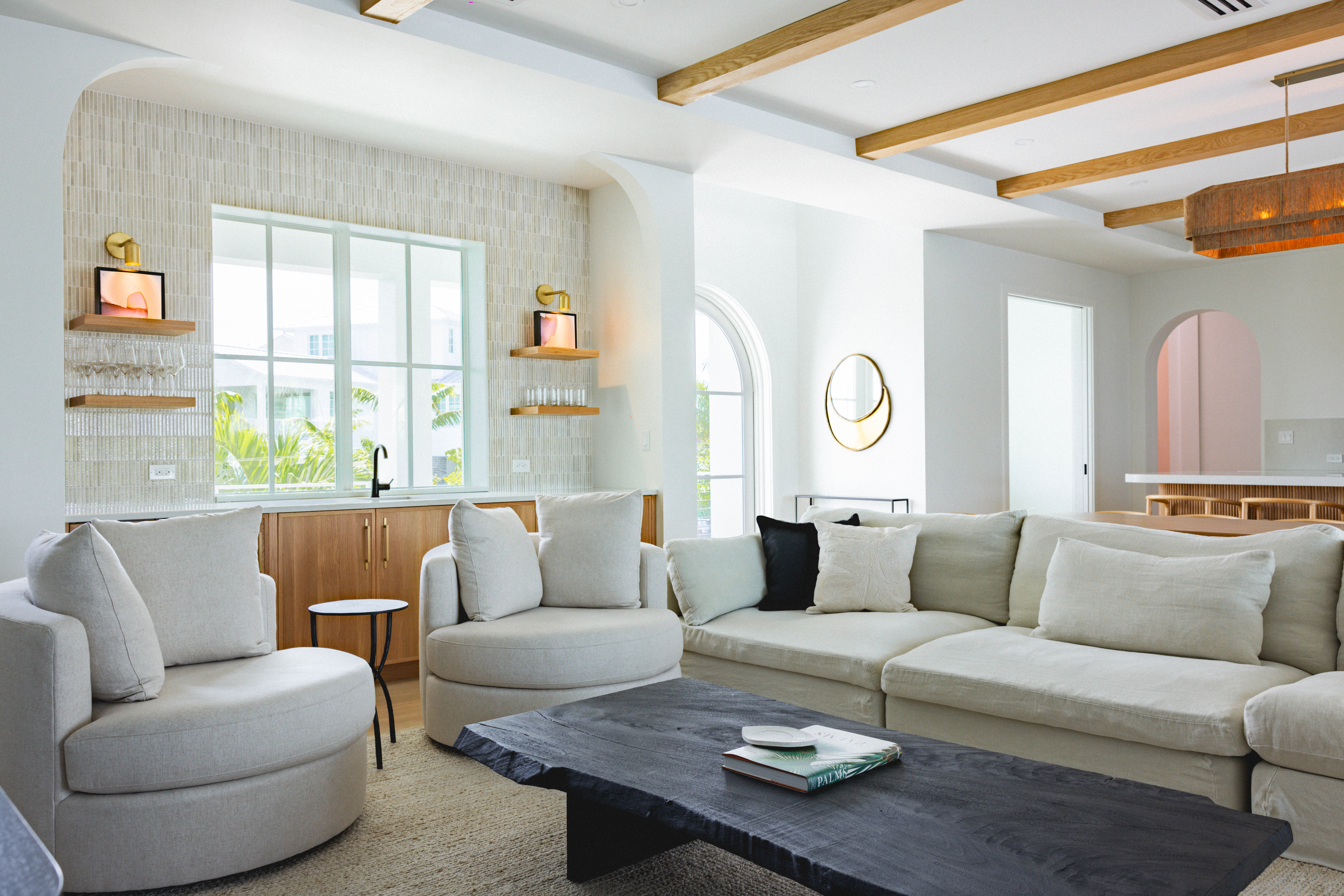
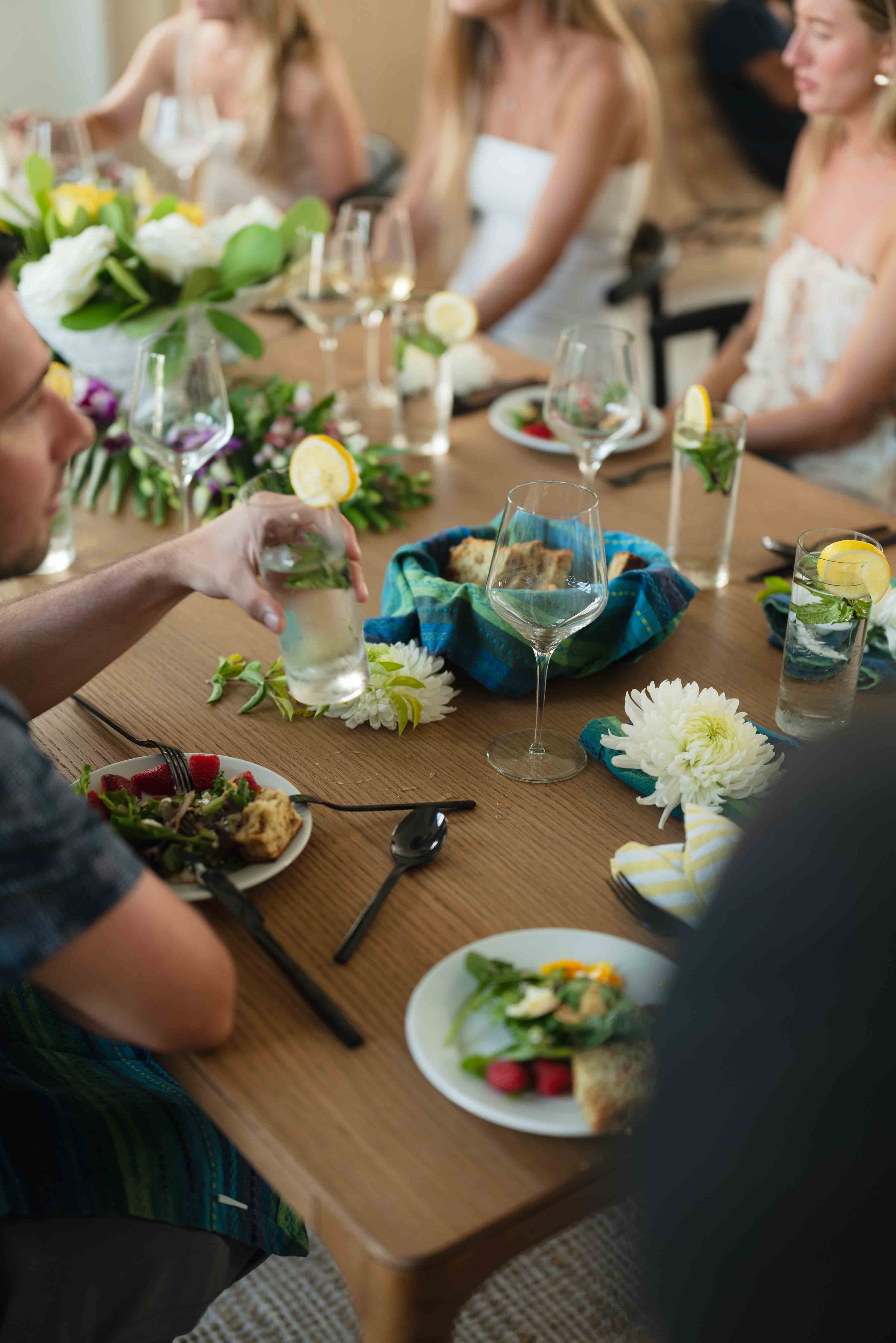
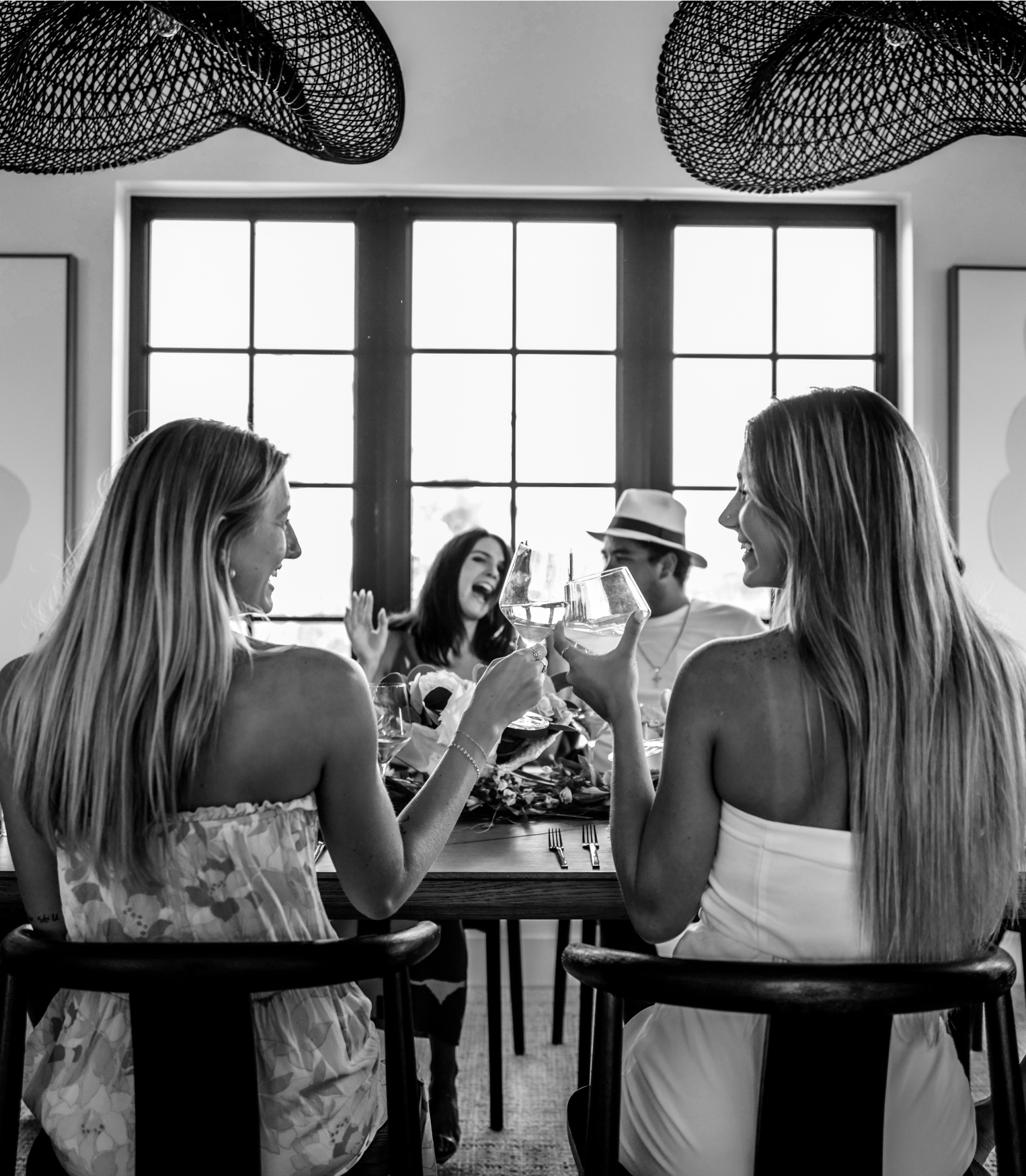
.jpg)
User-Centric Design in Action
Understanding Guest Diversity
Every Brightwild property begins with understanding our guests—not just demographics, but the full spectrum of how people travel and what they seek from their experiences. We recognize that today's travelers represent an incredibly diverse range of motivations, work styles, family structures, and lifestyle preferences.
Some guests are seeking high-energy social experiences, while others crave quiet solitude. Some need seamless technology integration for remote work, while others want to completely disconnect. Some travel in large multigenerational groups, others as couples, and many as solo adventurers. Some find joy in bold, stimulating environments, while others are restored by calm, minimalist spaces.
Rather than designing for an "average" traveler who doesn't really exist, we embrace this beautiful complexity of human preferences and create spaces that authentically serve the full range of how people want to live during their travels.
Intentional Space Planning
Each guest type inspires different spatial solutions. Our design process involves mapping guest journeys through our spaces—from arrival to departure—identifying friction points and opportunities to delight.
We consider the practical: How do guests move through morning routines? Where do they naturally gather? What creates stress, and what brings joy?
But we also consider the emotional: How does the space welcome them home after a day of exploration? Where can they find solitude when they need it? How do transitions between spaces feel?
Design Thinking in Practice: Lunara Bay
Our commitment to diverse, user-centric design is perfectly exemplified in our most recent project: Lunara Bay. This stunning waterfront resort features 26 luxury homes, each with its own individual design approach within a cohesive resort setting.
Rather than creating cookie-cutter accommodations, we embraced the challenge of designing 26 distinct experiences. Each home reflects different aspects of our design philosophy:
Some homes feature minimalist coastal modern aesthetics with clean lines for guests who find peace in uncluttered environments and ocean views. Others embrace the same coastal modern foundation but with stronger, bolder colors and patterns that celebrate the vibrant local culture. All properties feature seamless indoor-outdoor living with private waterfront spaces, while individual homes are tailored as intimate cozy retreats for romantic getaways or open social spaces perfect for family gatherings, weddings, corporate retreats.
The magic of Lunara Bay lies not just in individual home designs, but in how they work together as a resort community. Guests can choose the specific aesthetic and atmosphere that resonates with them while still being part of a larger, thoughtfully planned destination. A family might book the vibrant, activity-focused home while grandparents stay in the serene, sophisticated retreat next door—different design styles serving different preferences within the same vacation experience.
This project represents everything we believe about hospitality design: intentional variety, user-centric thinking, and the understanding that great spaces should inspire different people in different ways.
Diversity by Design: Something for Everyone
One of our core beliefs is that there's no such thing as universal design preferences. What feels inspiring to one guest might feel overwhelming to another. What seems cozy to some might feel cramped to others.
This is why Brightwild's portfolio intentionally features diverse design approaches:
Minimalist Modern spaces for guests who find clarity in clean lines and uncluttered environments.
Warm Traditional environments for those who seek comfort in familiar, homey elements.
Bold Contemporary designs for guests who are energized by color, pattern, and artistic expression.
Natural Organic spaces that blur the lines between indoor and outdoor living.
Each approach serves different guest needs and preferences, ensuring that every traveler can find a Brightwild property that truly resonates with them.
The Ripple Effects of Thoughtful Design
When we get design thinking right, the benefits extend far beyond guest satisfaction:
For Guests: Spaces that intuitively support their needs, reducing friction and increasing enjoyment throughout their stay.
For Communities: Properties that respect and enhance local character while providing economic benefits to the area.
For Owners: Higher occupancy rates, better reviews, and properties that maintain their value through thoughtful, timeless design decisions.
For Our Team: The satisfaction of creating spaces that genuinely improve people's experiences and memories.
Looking Forward: The Future of Hospitality Design
As travel patterns evolve and guest expectations continue to rise, our commitment to design thinking becomes even more crucial. We're constantly learning, testing new approaches, and refining our understanding of what makes spaces truly inspiring.
The future of hospitality isn't just about providing a place to stay—it's about creating environments that enhance every aspect of the travel experience. At Brightwild, we're proud to lead that evolution, one thoughtfully designed space at a time.






